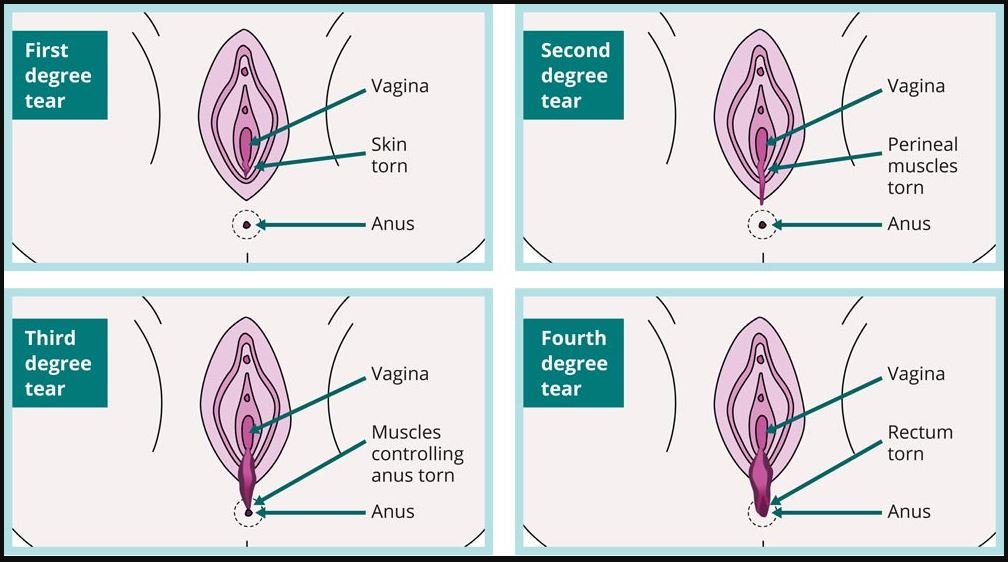5 Tips to Prevent Perineal Tearing During a Vaginal Birth
The Down Low on Perineal Tearing
Perineal trauma is a common occurrence during a vaginal delivery but did you know that there are ways to reduce your risk? of course there is pelvic floor therapy, which can greatly aide in this. Think of pelvic floor therapy during pregnancy as a way to prepare your body for giving birth. You wouldn’t run a marathon without training, would you? But there are other ways to prep your body that you can absolutely incorporate on your own!
First, let’s do a quick refresher on what perineal tearing is. Your perineum is the area between your vaginal opening and anus. When your baby is crowning it applies a certain amount of stretch to the perineum and sometimes this results in tearing of the tissue. We classify the severity of the tear by grades.
Grade 1: Injury to the superficial perineal tissues. Requires 1-2 stitches, if any.
Grade 2: Injury through the superficial tissue and into the perineal musculature.
Grade 3: Injury through the perineum and into less than 50% of the anal sphincter.
Grade 4: Injury through the perineum and into greater than 50% of the anal sphincter.
Okay, so what can I do?
Perineal Massage
This is a great thing to start around 35 weeks. You can do it to yourself (in either a Captain Morgan’s pose or comfortable side lying/reclined position) or with the assistance of a partner. The idea is to insert your thumb about a knuckle deep into the vaginal opening and apply a firm pressure towards your anus. Take a few deep breaths here and work your way around the vaginal opening. repeating the same thing.
Poses that Stretch the Perineum
Try a deep supported squat or happy baby pose. These positions stretch the perineal area and are also excellent pelvic floor relaxation poses. Once in the pose, take a few deep inhalations here as you hold the stretch.
Warm Compresses
When baby is crowning, ask your partner or birth worker to apply a war compress to the perineum. Yes, this is a totally reasonable request. This will help increase the blood flow to the area making it more adaptable to the stretch.
Try Different Labor Positions
Positions such as on your hands and knees, side lying or squatting greatly decrease your risk of tearing compared to a traditional supine position. And yep, you can even do some variation of these positions with an epidural.
Breathe While Pushing
Keeping an open mouth when pushing (think: a breath, moaning, or screaming) can help to decrease the strain on the pelvic floor. Imagine that with an open mouth you are keeping the doors open to let baby out. When you hold your breath, you are keeping your pelvic floor muscles in a shortened position, leaving you more susceptible to a tear.







